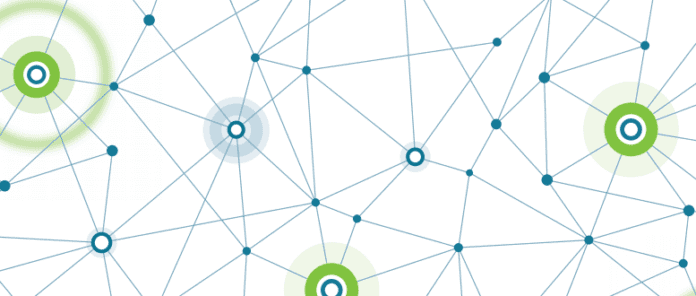Communication service providers need to simplify and rationalize their service assurance systems across all networks – mobile and fixed, enterprise and IT/data center – so that they can be maintained at peak performance and maximize the utilization of the network resources. As a consequence of evolving digitalization, there is a great need to build operation centers that are predictive, customer-centric, analytics-driven and highly automated to help CSPs achieve speed and massive opex savings. Another focus area is assurance of digital services. Digital SQM systems assure and help to monetize the quality of Video/IPTV and other digital services, which helps CSPs to offer a differentiated service experience and monetize it through analytics.
There is a need to ‘evolutionize’ service assurance by introducing highly modernized engine, analytics and automation, to combine data from various sources and make it suitable for the digital service provider. Such evolved systems will be suited to address the challenges of IoT and 5G as well, especially those of monitoring and assuring the performance and quality of service (QoS) of network slices. This includes machine learning to help telecommunication service providers monetize IoT assurance and analytics capabilities.
How CSPs can benefit from automated operations
Automation of operations center processes is key to achieving success in the virtualized and digitalized telco cloud environment. Accuracy, speed and error-free operations are critical to the success of a digital business. This includes using auto-detection of service policy violations, managing configurations, automating root cause analysis and remediation, reducing MTTR.
By integrating analytics and automation, data can be visualized and actioned in the predictive operation center in a totally new manner, removing human latency and enabling real-time experience of the CSPs’ customers.
CSPs have found new ways of combining analytics with automation for network monetization; for example, for discovering untapped capacity in their networks. This enables CSPs to direct services to those parts of the network that are underutilized.
Alternatively, capacity can be dynamically moved to areas of network where it will be utilized better. By automating the process of reducing or reorganizing capacity bottlenecks in the network, the operator can save big chunks of opex.
Efficient automation requires planning and prioritization
CSPs are working towards realizing a fully automated, zero-touch operation center using closed-loop corrective actions, complex algorithms and machine learning. And to support the dynamic SLAs of the telco cloud, the Service Assurance system is expected to support on-demand capacity configuration and dynamic topology changes, which can happen only through automated real-time network feedback and automatic configurations.
CSPs can identify processes and workflows that require a high level of automation and those that need manual control. As an example, automation of the CSPs’ radio optimization processes, congestion management and backhaul optimization can dynamically optimize network capacity and release teams for high-skill complex analysis. Automation also includes use of open APIs and automating delivery and assurance of new on-demand services.
Additionally, the combination of customer analytics with automation techniques can help CSPs to create and drive new personalized services for locations and customers, bringing almost instant monetization of available capacity.
Managing higher speeds and higher data volumes in the future
To make the digital business successful and to support the expected dynamicity, speed and scale of the digitalized networks, certain technologies and functionalities are necessary to be adopted into the Service Assurance platform.
Along with Open APIs and OpenStack for cloudification, it is important to develop a micro-services architecture which uses DevOps-enabled iterative processes to quickly respond to customer needs by developing services faster. It also helps in faster delivery of services, quicker root cause analysis and real-time customer issues’ resolution.
CSPs are now extending their business to become IoT service providers, offering high quality, high reliability networks and soon supported by 5G. For this, Service Assurance will be enhanced with elasticity of database, Hadoop cluster technologies and machine learning to manipulate big data at faster rates in real-time
Big data analytics to unlock network monetization
Analytics are critical to understand the usage of the telco cloud, the services it offers its customers and devices. They fuel the service agility expected in a virtualized network, other than optimizing capacity of the hyper-converged network.
CSPs can obtain trends on performance, capacity and faults using sophisticated machine learning-based analytics tools.
As an example, identification of revenue-generating locations, capabilities of handsets, customer behavior, uplink and downlink video traffic, consumption of video/conversational services, etc. allow optimal network investments and helps in directing marketing campaigns for maximum business impact.
Network monetization and service personalization are only possible by running powerful analytics on big data. CSPs can proactively identify low congestion zones/ locations and rapidly fill spare capacity with revenue-generating traffic from new service offers such as video streaming, mobile TV or smartphone apps.
Next generation service assurance for supporting IoT services
IoT networks are currently being overlaid on existing communication networks and many of the connected IoT devices will be controlled through reliable, cloud-based management systems, operated by CSPs. These systems will not only check the performance, but also provide real-time visualizations of the devices and insightful data generated by the devices.
IoT management systems will ensure IoT data reliability by managing the end-to-end performance of IoT gateways and inter-device communication, assuring that the IoT network and devices are operating in a faultless manner, delivering on the promise of 100% connectivity and 100% reliability.
Key IoT performance measurements will include the performance of the sensored devices, ensuring the QoS, reliability and security of those devices, specific to the industry verticals. In addition, CSPs will use these platforms for monetizing IoT analytics.
The business potential of an OSS-based data monetization platform can offer the CSP huge benefits by supporting IoT initiatives such as smart city services, connected factories and autonomous car industries, to start with.

